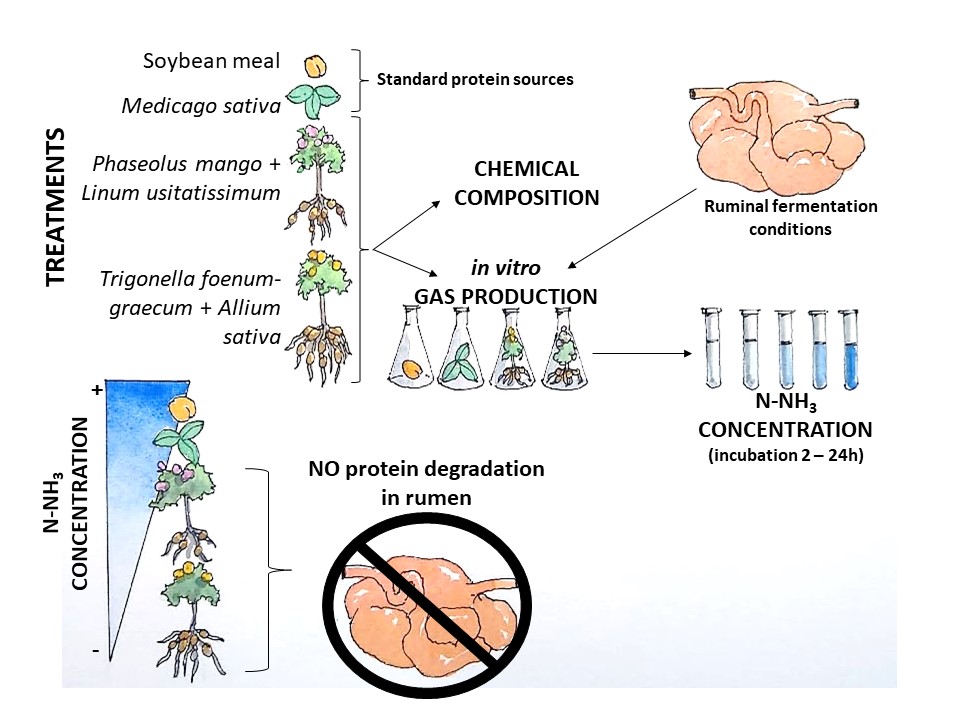Ruminal ammonia concentration and fermentation kinetics of commercial herbal feed additives with amino acids
DOI:
https://doi.org/10.48162/rev.39.028Palabras clave:
Allium sativa, Aditivo herbal, Linum usitatissimum, lisina, metionina, nitrógeno amoniacal, Phaseolus mango, proteína, rumen, Trigonella foenum-graecumResumen

The objective of this study was to characterize the chemical composition of rumen fermentation while estimating it’s in vitro protein degradation (from ruminal ammonia concentration) and kinetics regarding two herbal feed plant additives. The tested herbal mixtures were elaborated with Phaseolus mango and Linum usitatissimum, providing lysine (Lys) and Trigonella foenum-graecum and Allium sativa, providing Methionine (Met). They were compared to alfalfa (Medicago sativa) and solvent extracted soybean meal (Glicine max), as standard sources of protein using the in vitro gas production technique modified to estimate N-NH3, recording fermentation kinetics and dry matter digestibility (72 h), in a completely randomized design followed by Tukey test. Ruminal ammonia concentration in the herbal mixtures was lower (P<0.05) than in the standard protein sources, indicating that protein from herbal mixtures could resist ruminal degradation. Herbal additives with Lys or Met showed minimum N-NH3 concentration in the first 4 h of incubation. At 8 h, the concentration was 0.27 and 0.54 mg dL-1 for the herbal products with Lys and Met, significantly lower than solvent extracted soybean meal and alfalfa (1.15 and 2.24 mg dL-1 respectively, P<0.05).
Highlights- The tested herbal mixture elaborated with Phaseolus mango and Linum usitatissimum, provide bypass Lysine.
- The tested herbal mixture elaborated with Trigonella foenum-graecum and Allium sativa, provide bypass Methionine.
- Ruminal ammonia concentration in the herbal mixtures was lower than in the standard protein sources.
- Protein from herbal mixtures could resist ruminal degradation.

Descargas
Publicado
Número
Sección
Licencia

Esta obra está bajo una licencia internacional Creative Commons Reconocimiento-NoComercial-CompartirIgual 3.0.
Aquellos autores/as que tengan publicaciones con esta revista, aceptan las Políticas Editoriales.



